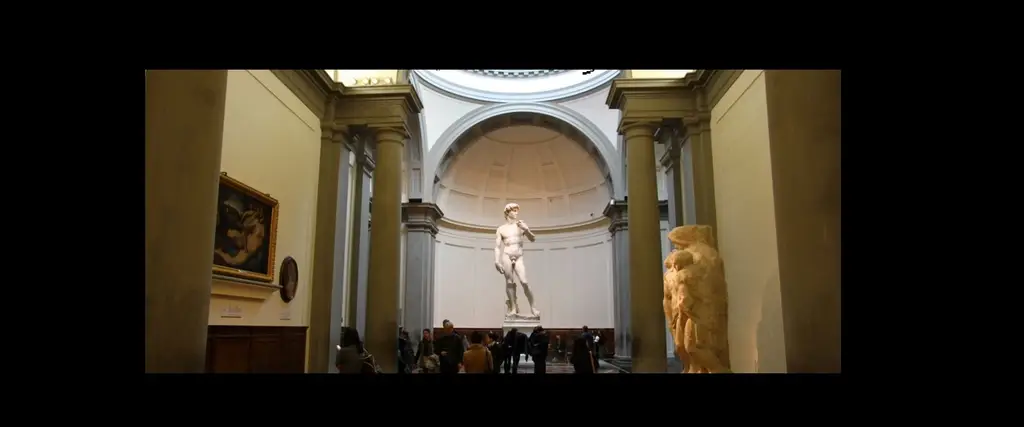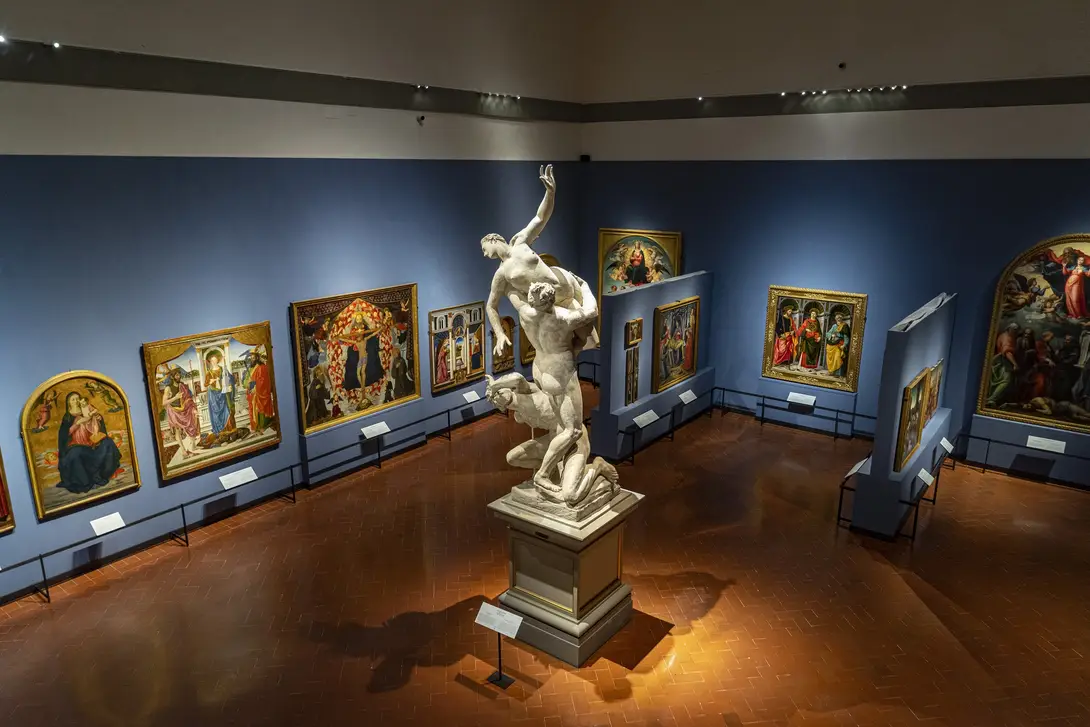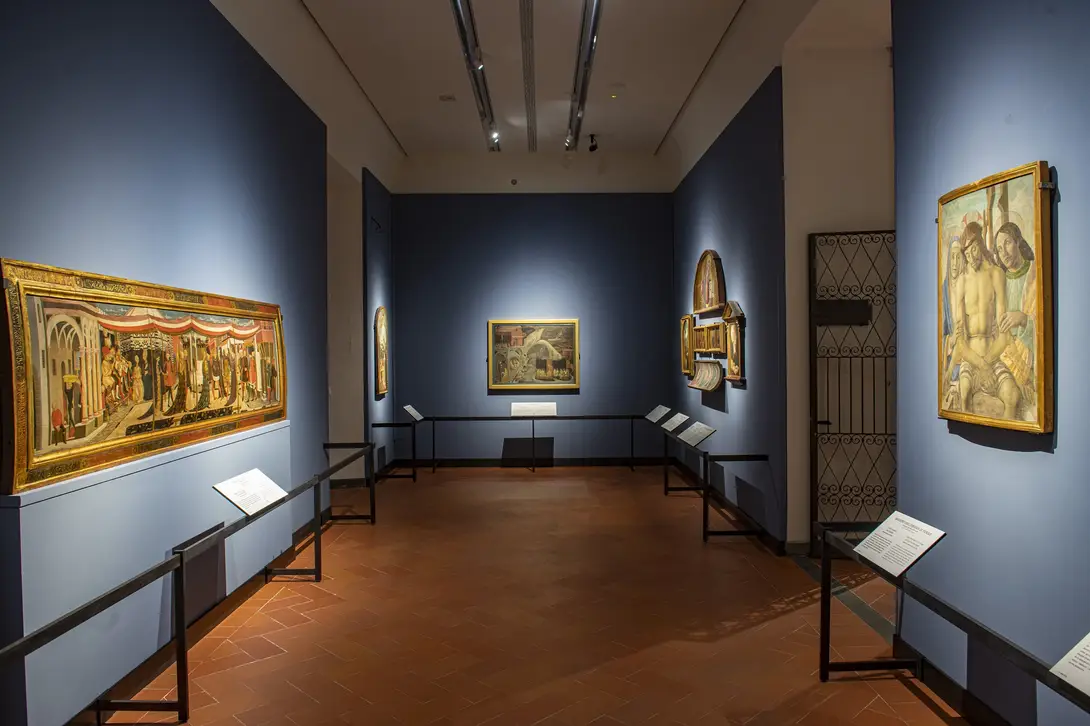
Galleria dell'Accademia di Firenze - Academy gallery
The Academy Gallery (Galleria dell'Accademia) in Florence is known around the world as the ‘Michelangelo Museum’ (for the statues of David and the Prisoners), but it is actually much more than that.
It stands on the site where two convents originally stood, next to the Academy of Fine Arts, which still has its seat here. The first nucleus of the collection was formed in 1784 with a series of works of art, donated by the Lorraine Grand Duke Pietro Leopoldo; in 1873 Michelangelo's David, a true icon of western art, created by the artist between 1501and 1504, was moved here (from Piazza Signoria, replaced by a copy). Later, other works by Michelangelo arrived at the Accademia Gallery: the Four Prisoners (conceived for the tomb of Pope Julius II), the St. Matthew and the Palestrina Pietà, all unfinished works by the great artist, representing Michelangelo's famous ‘unfinished’.
In the Sala del Colosso is the original sketch of the Rape of the Sabine Women by Giambologna, together with numerous paintings of 15th and 16th century Florentine painting (Paolo Uccello, Botticelli, Perugino, Ghirlandaio, Filippino Lippi). Other important 16th-century paintings are exhibited along the Galleria dei Prigioni and in the Tribuna del David, adjacent to the Giposteca Bartolini, where numerous plaster casts by the famous 19th-century sculptor (and other contemporary artists) are collected.
In the Halls of the 13th and 14th centuries, numerous paintings can be admired, including works by important followers of Giotto (Tadeeo Gaddi, Bernardo Daddi, Orcagna) up to the International Gothic of the early 15th century. Don't miss the Museum of Ancient Musical Instruments (from the nearby Luigi Cherubini Music Conservatory, and even earlier from the Grand Ducal and Lorraine collections): about fifty pieces, including a viola and cello by Antonio Stradivari, a spinet and a forte-piano by Bartolomeo Cristofori, the inventor of the piano.
Comune di Firenze e Guido Cozzi
Useful information
Last admission and ticket-office closing at 18:20.
Updated information about other closing days on the official Website
Completely accessible for the disabled in a wheelchair. The entry and ticket office are accessible in the street at number 60. The following rooms are also completely accessible: Hall of the Colossus, Musical Instruments, Gallery of the Slaves, Tribuna of David, Giotto and Giottesque printers room, 13th and Early 14th Century Room, Orcagna Room, temporary exhibitions, Plaster Cast Gallery (accessible through a slightly steep ramp) and bookshop.
On the ground floor, next to the stairs leading to the first floor there is an elevator and a toilet for the disabled. To visit the rooms on the first floor (Lorenzo Monaco and Late Gothic Painting Room) there are two stairlifts which can carry 250 kg/551 lbs (size 70 cm x 83). Free and priority access for the disabled and their carer.
Tactile maps are available in the museum in both Italian and English. One is located on the ground floor in the Sala del Colosso (the first room visitors encounter on their tour) and provides general orientation information about this floor of the museum. The other is on the first floor. This map also provides orientation and includes a brief introduction to the contents of the rooms on this floor, which are dedicated to Lorenzo Monaco and the Late Gothic period.
Additionally, special guided tours are occasionally organized for visitors over 65 and for individuals with cognitive impairments or psychological distress, with the aim of making culture and art inclusive and accessible.
The Servizi Educativi e Accessibilità (Education and Accessibility department) have developed two tools to facilitate museum visits: akit containing useful information and interesting facts about the Galleria dell’Accademia di Firenze, designed to be consulted before the visit, and a social story to guide visitors through the exhibition rooms. Both resources are available on the official website.

